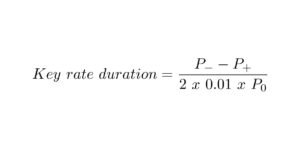What Do You Know About Kangaroos?
Kangaroos are the Australian equities that comprise the nation’s benchmark All-Ordinaries Index and are called “kangaroo” in this terminology. The most actively traded Australian company stocks make up the index.
Recognizing Kangaroos
The All-Ordinaries Index, the most quoted benchmark index for the nation’s equity market, comprises the Kangaroos. The Australian Stock Exchange computes and distributes the index and its results. Established in January 1980, the market-weighted All-Ordinaries Index comprises around 500 firms and is the oldest index in Australia.
At the close of business on the final day of 1979, the index’s base value was 500.00, representing the contemporary aggregate market value of all its member companies.
Companies included in the All-Ordinaries Index must have a market value equivalent to at least 0.2 percent of all domestic equities quoted on the exchange and a monthly average turnover of at least 0.5 percent of their quoted shares.
Since the market values of the stocks that fit these requirements differ, changes in the share prices of larger-cap firms have a more significant impact on the index than smaller companies. Financial corporations make up the largest portion of the index when we break it down by industrial sectors, then raw materials and industrial sectors.
The overall performance of the market
Due to its weighting by market capitalization and indexing to total market value, the All-Ordinaries Index represents the market’s performance as a whole rather than the traditional performance of individual equities. Notably, dividends paid to shareholders are not included in the index. Therefore, the index does not represent the overall profits from investments made in the stock market for any given period.
The base number 500 multiplied by the index members’ current aggregate market value ratio to the index’s initial aggregate market value is used to compute the index’s subsequent values. The market capitalization of the companies in the index represents a sizable portion of the value of all shares listed on the Australian Stock Exchange. At the end of each month, the Australian Stock Exchange adjusts the index portfolio to ensure the companies are still eligible for inclusion. Throughout the month, adjustments to the portfolio companies—such as delistings, additions, and capital reconstructions—may also impact the index.
Bond Market Kangaroos
The Australian bond market is also referred to as kangaroos. A “kangaroo bond” is a foreign bond that an Australian company issues on the Australian market and values in Australian dollars. The issuer would like to increase the diversity of their debt and increase their exposure to lenders and investors involved in the Australian debt market.
Companies, banks, and governments are among the entities that issue kangaroo bonds. In the past, major kangaroo bond issuers have been market actors from the United States and Germany.
When Australian interest rates are lower than those of foreign firms, the kangaroo bond is typically issued in more significant quantities, which lowers the foreign issuer’s total interest costs and cost of borrowing.
Foreign bonds offered in other markets, such as Samurai, Maple, Matador, Yankee, and Bulldog bonds, are conceptually similar to kangaroo bonds.
In Short
Kangaroos are stocks that are included in the Australian All-Ordinaries Index. The market capitalization-based All-Ordinaries Index calculates the total market value of the 500 largest traded companies. Kangaroos can also refer to Australian dollar-denominated instruments, such as bonds issued by international corporations in Australia.
Conclusion
- Insiders call the stocks in the Australian All-Ordinaries Index “kangaroos.”
- The All-Ordinaries Index measures the total market value of the 500 most prominent companies in the world based on their market valuation.
- You can also use the word “kangaroos” to talk about Australian dollar-denominated assets, like bonds sold in Australia by foreign companies.













































